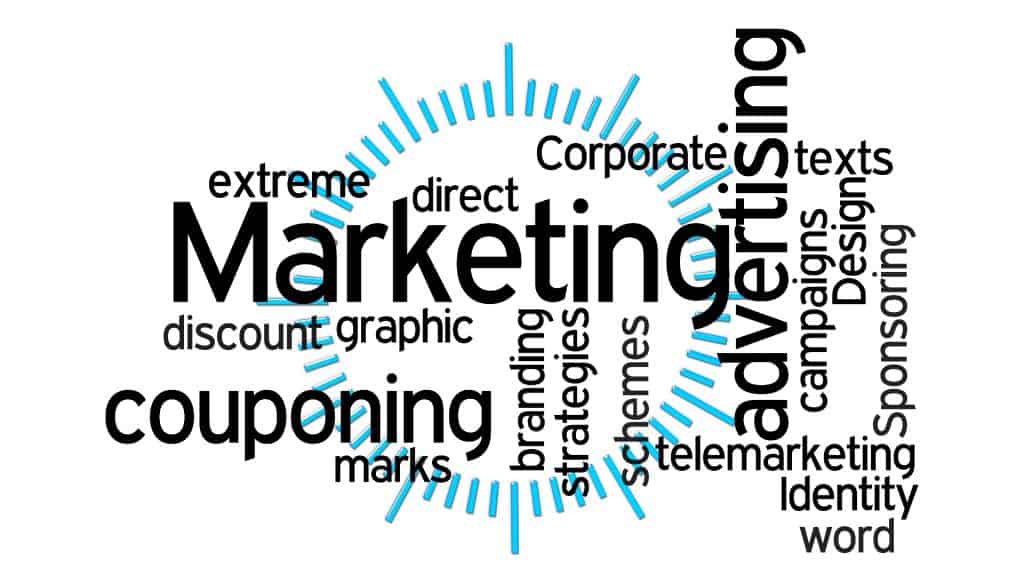Market Segmentation
Personalized content is the key to attract customers. The more you target specific people with specific interests, the more your business benefits. Your products and services cater to specific people, not to everyone. Your brand can’t appeal to everyone. It appeals to people who need, appreciate, and want what your company offers : your consumer’s profile.
The market of potential customers is segmented, divided into categories and subcategories. How can your marketing campaign reach the people who will love your brand? The latest secret on the block is out. It’s called market segmentation.
What is market segmentation?
This term means that your company will divide its target audience into smaller categories. For example, people of all ages might enjoy your brand or sevice, but the difference in age is crucial. Older consumers have different tastes and needs than teenagers. The market segmentation strategy allows you to identify these age categories. Once you have divided your clients into these sections, you can build marketing campaigns based on their characteristics.
Different people will love your brand and your business needs to target all of them. This will help you personalize your content. Market segmentation helps companies focus their resources.

The types of market segmentation
The available markets for companies seem endless. How can you group people for a better analysis? The data and information to categorize your target include:
- Demographic segmentation
- Behavioral segmentation
- Geographic segmentation
- Psychographic segmentation
Demographic segmentation
This categorization divides your customers by age, gender, income, and social class. The question that will help is: who is my (potential) consumer? This segmentation will tell you the purchasing power of the groups, letting you know what people are more likely to purchase your products or services. For example, you don’t market your wine bottles to people under the age of 21.
Behavioral segmentation
This personalization is based on product usage, purchase behaviors, and consumption. Your brand is segmenting people based on how they spend their time. It also tells you data about customers’ lifestyle. This segmentation strategy tells your business what people are buying. It groups consumers who have purchased the same items and who have the same customer satisfaction (or brands loyalty).
Geographic segmentation
As the term suggests, this market segment groups people with the same geographical location. You can divide your target audience by city, villages, or country. You can also divide it into urban, surubran, and rural. Your analysis will help you group consumers by geography. Different people in different parts of the world, country, or area have different tastes. This market segmentation strategy allows you to target your customers by geography.
Psychographic segmentation
Perhaps trickier, this market segment groups people with similar hobbies, opinions, interests, values, and lifestyle. This strategy allows businesses to know what motivates customers and what they enjoy. Knowing their hobbies can help you figure out their next purchase. For example, you own a store of sports supplies. You know that most of your target people play tennis as a hobby. Then you can create a marketing campaign to target them. For example, by advertising your best tennis shoes online.
You don’t have to choose only one of these market segmentations. You can have a better and more comprehensive analysis by picking at least two of this criteria. The more specific the segmenting, the more worth your time.
The benefits of market segmentation
Does this strategy sound like a headache? It’s worth the pain of figuring it out.
Personalization. The more specific your marketing campaign is, the more you will reach the ideal people (your consumer). You don’t need a broad audience for your brand. You need the right one. Reaching right audience is a huge challenge for brands: this is the best way to sell a product or a service.
Find the niche
Applying market segmentation to your brand will help you find a more specific niche for your services and products. And perhaps you will identify other niches that can help your digital strategy.
Successful marketing campaigns
If you know your audience, your marketing strategy will be successful. Your company can build its online presence around the data of market segmentation with two consequences. You will boost brand awareness as well as sales.

Raise brand awareness
Market segmentation helps you reach people who might not find your company. Being detailed with your target audience will help you boost brand awareness.
Raise sales
Since you are reaching anyone who might be interested in your products, the raise in sales is a plusside. Market segmentation will help your business’ sales. The more traffic to your website, the more purchases.
Customer satisfaction
Consumers appreciate ads and campaigns that know them. People will appreciate your attention and care. They will feel special and that gorgeous feeling can only lead to customer loyalty.
Customer loyalty
In the end, you don’t want one-time customers. Your business goal is to create loyalty. Consumers have to come back for more of your products and personalized services. With the right strategy, you won’t just have clients. You will have members. Members who purchase from your brand.
How to do market segmentation
Now if you have less of a headache, don’t you? But you might still have one question. How do you actually do market segmentation?
First, collect your data
There are many ways that you can find the information about your target audience. A great starting point is the analytics of your social media accounts. You can also go local and gather data about the people around you. What appeals to them? You can also use surveys to understand who your audience is. You can send an email blast or use social media to ask questions to your customers. Collect your data over time, to have a better analysis of how your consumers behave as time goes on.
Find the segments
Once you know your audience, it’s time to divide it into markets and categories. You can filter them on tools such as spreadsheets to segment your target audience by geography, hobbies, age, gender, and all the types of market segmentation. You can do this analysis with businesses as well as consumers.
Build your marketing plan
Now that you know who your people are, it’s time to personalize your marketing strategy. Every segment has a preferred social media network or media channel. That’s helpful information for your business. The analysis of your online traffic can help you identify what channels appeal the most to your market.
Use your resources
Aside from creating a brand new market segmentation plan, remember to use the resources you already have. Some of them include the analytics from your social media networks and the data from your website.
You can do your market segmentation by yourself. All you need is a detailed and organized system, to make sure you have all the information in order.
Marketing segmentation strategies
The keywords are: details and focus. Why? Because there isn’t a secret to a successful market segmentation. First you need to have all the data about your target audience. After you also know what channels you will use, your marketing segmentation strategy is ready.

As long as you take your time to analyze your segments and the categories, you will succeed in your advertisement campaigns. It’s not enough to have specific segments and a detailed target audience. Your digital plan should be just as comprehensive and definite. Your goal is consumers’ purchases as well as showcasing your services. Targeting the ideal people is key.
Your marketing segmentation strategy is about showing people who you are. What’s your brand about? Let your target audience know.
Market segmentation mistakes to avoid
With something so personalized as market segmentation, mistakes can happen. Knowing what they are allows you to avoid them with your business.
Don’t have limited data
While it might be tempting to stop only after a few analyses, try avoiding it. Take your time to make sure you collect as much data as possible. The more available markets you have for your brand, the better results. Having a lot of specific information will help your marketing strategy. The more comprehensive, the more efficient your targeting.
Select your communications channels
Aka don’t use all the digital resources available. Just because you know your segments, you shouldn’t spread your content on every platform. Select your networks carefully and based both on your business goals and on your target customers. Based on age and geography, consumers prefer different communications platforms. Make sure you choose the right ones for your markets and brand.
Consider the time
People aren’t constantly on the media. While it seems that consumers are always engaging, they take breaks -and they sleep. Once you know your niches, make sure you research when they login. At what time do they scroll over their Instagram? The analytics of your accounts will help you figure it out.
Don’t minimize your niche
While the secret to personalization is finding a niche, don’t make the niche too small. You should make sure that you have enough room to correct the course, if needed. The correct size is the one that allows you to create a comprehensive targeting plan.
Don’t maximize your niche
A niche is all about the details and a customized experience for your customers. A wide segment can make your company lose focus and characteristics. Making sure your target is the right size will give you a chance to actually and truly reach the right people.
So, what’s the right size for your markets? The one that allows you to boost sales, promote your services, and reach your goals. Targeting the perfect niche will allow your business to boom.
Market segmentation is a powerful strategy to help your business. It helps you define your target audience and it can help you reach your goals. The more data you have, the more you will enjoy the benefits of a market segmentation strategy.